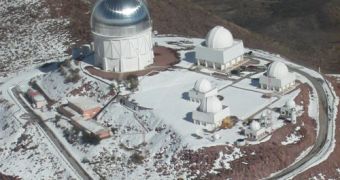Experts at the University of Portsmouth, in the United Kingdom, announce that they finally managed to bring their first supercomputer online. The machine, based at the Institute of Cosmology and Gravitation (ICG), will be involved in the search for dark matter and dark energy.
The instrument is powered by a 1,008-core cluster, which is capable of performing about one billion calculations each second. This is the first tool of this type that the ICG team will operate.
According to the university, the supercomputer uses 2.66GHz Intel Xeon processors, is capable of providing 85 terabytes of fast parallel storage and 10 terabytes of NFS storage. Its operators have dubbed the machine Sciama.
Data for the supercomputer will be provided by the Cerro Tololo Inter-American Observatory, in Chile, which is currently creating a huge image of the night sky above the southern hemisphere.
Investigators say that the map will be sufficiently complete to allow for the beginning of dark energy hunt by the end of this year. This means that the crew at the University of Portsmouth finished its end of the project right on time.
Dark matter is important to science because it represents a theoretical form of matter that does not interact with the regular stuff except through the force of gravity. Other than that, despite massive efforts by scientists, not even a trace of its existence exists.
Dark energy is believed to be the force behind the ever-accelerating expansion of the Universe, which sees galaxies flying away from each other at high speeds. The reason why that happens is unknown.
“All the galaxies in the Universe seem to be going faster and faster away from each other, which is a very strange thing indeed,” explains UP senior research fellow Dr. David Bacon.
“We don't understand why they're going away faster and faster. Whatever [is] causing that we call dark energy, and from those distortions you see, you can learn about dark energy,” he goes on to say.
The Chile-based observatory will play an important role in searching for the elusive stuff. It will image the shape of galaxies, and then compare them to each other. Whenever astronomers get a match, they can then calculate the presence and location of dark matter, Daily Galaxy reports.
“You can literally chop up this vast image of the night sky into little postage stamps of the galaxies you care about. And for each of those galaxies you just want to do some fairly simple tasks – you want to fit a profile to it, you want to measure its width, you want to count up all the pixel values,” Bacon says.
“By examining these observations in great detail, we can measure all the properties of galaxies and, on the other hand, we can use the supercomputer to predict what different theories of dark energy would predict for those things we're seeing,” he concludes.

 14 DAY TRIAL //
14 DAY TRIAL //